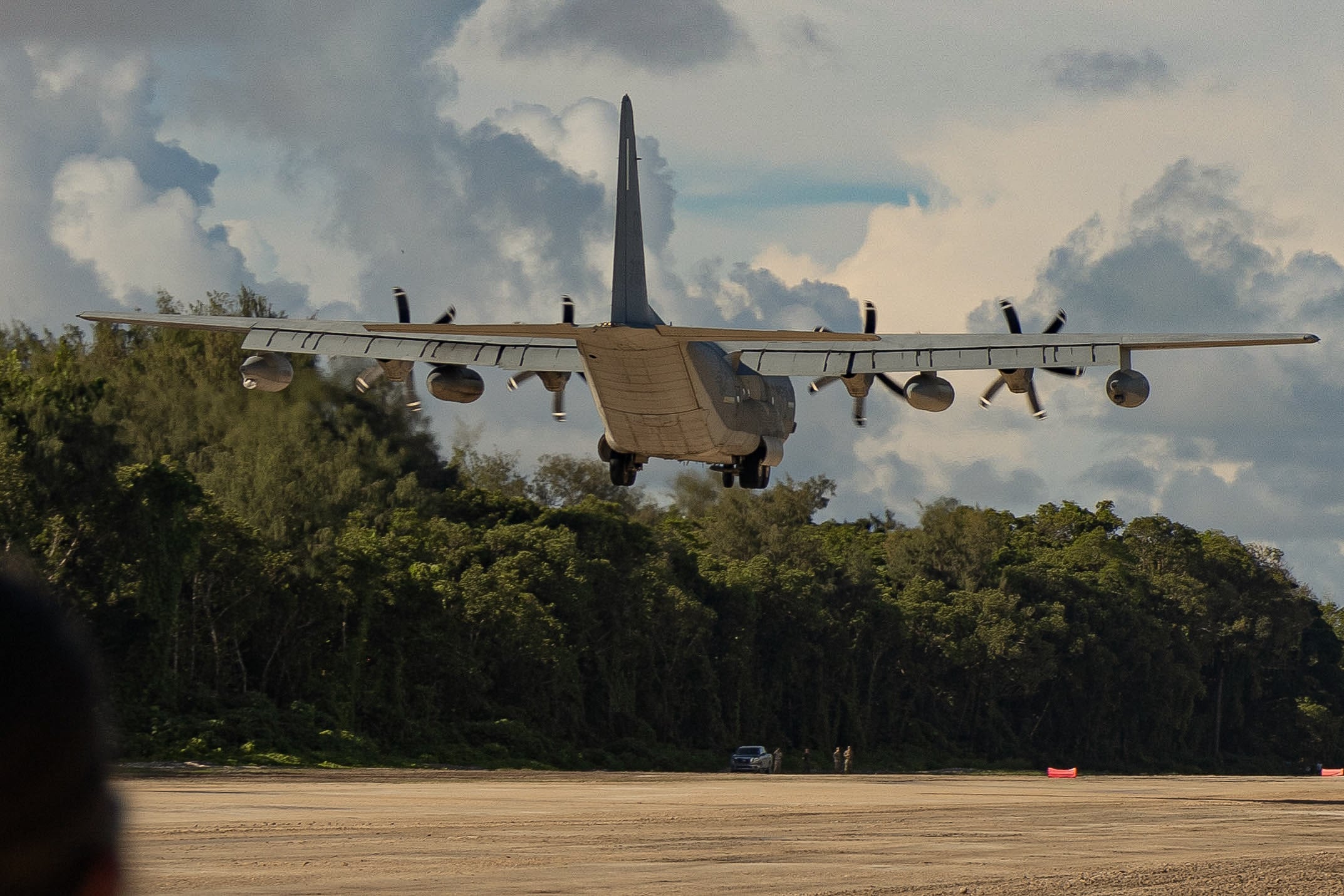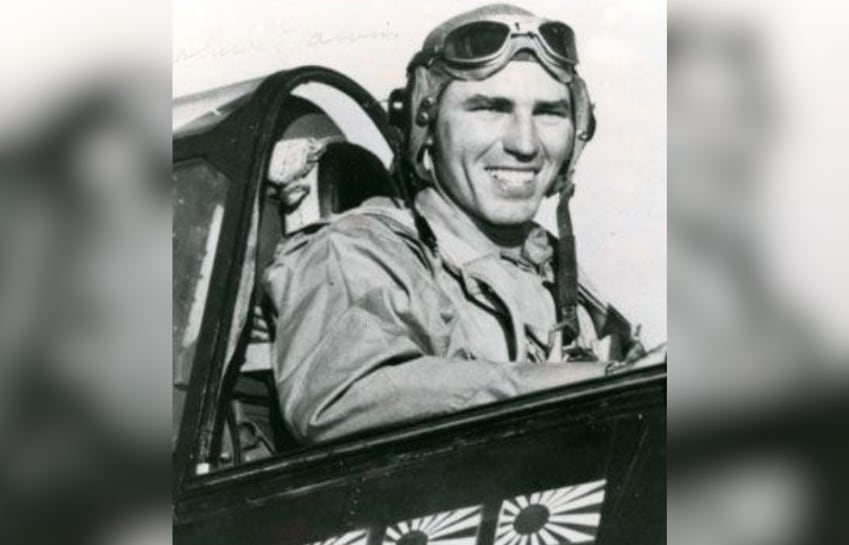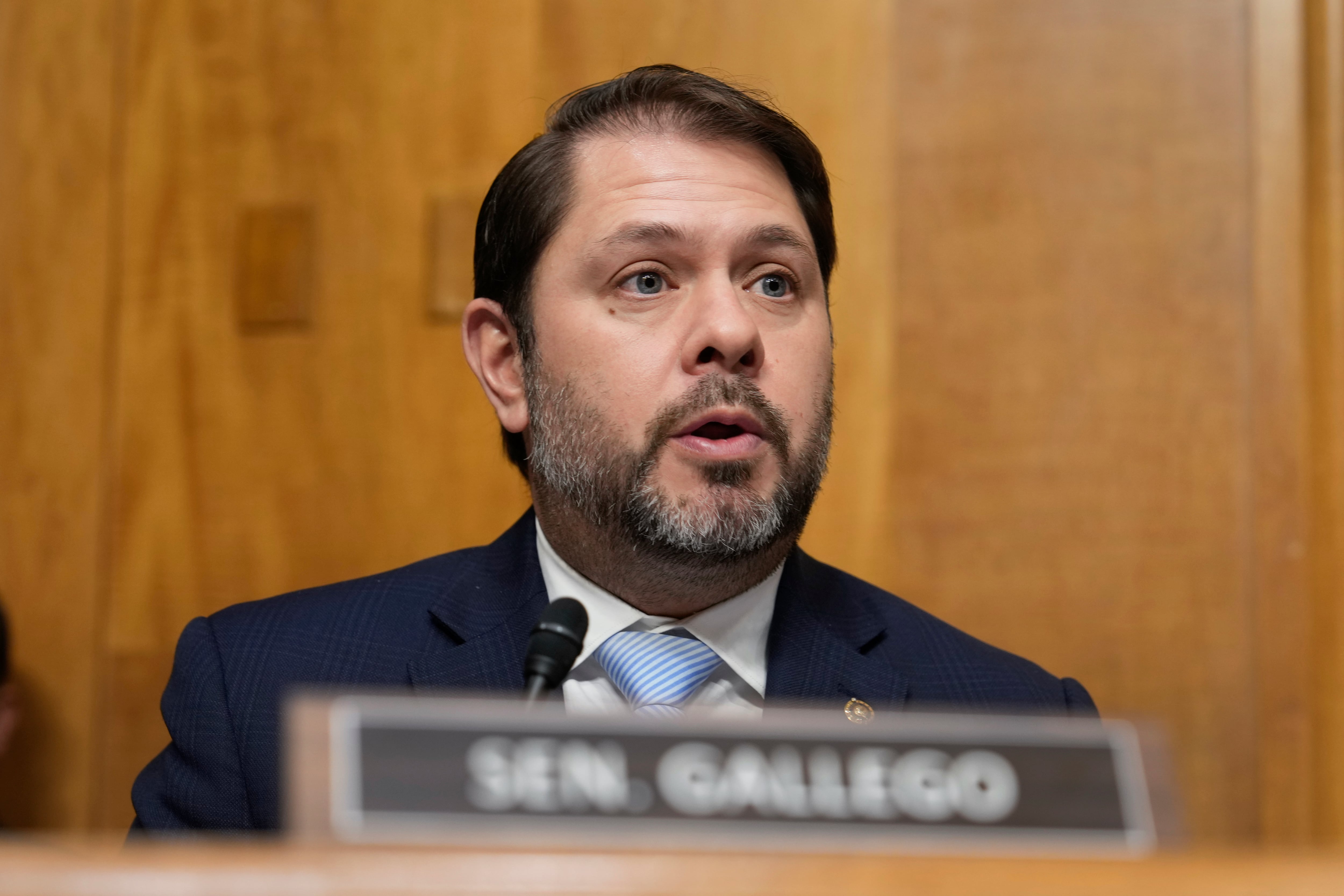The United States Navy produced scores of fighter aces during World War II in the Pacific, but arguably most unique among them was one airman who, after his flying career was interrupted by enemy ground fire, owed his return to a submarine.
Born in Burlington, Iowa, on April 21, 1920, John Roderick Galvin enlisted in the Navy in 1942, qualifying the following year as a naval aviator before being assigned to fighter squadron VF-8 aboard the aircraft carrier Bunker Hill.
The Bunker Hill’s cruise began with a March 30-31, 1944, raid on Peleliu in the Palau Islands, during which its pilots claimed 11 enemy aircraft shot down.
RELATED

The following day, however, Galvin’s luck ran out. Flying his fifth combat sortie in his Grumman F6F Hellcat, Galvin managed to strafe a Mitsubishi “Betty” bomber on the airfield at Woleai Atoll — before being greeted with a barrage of anti-aircraft gunfire.
Badly shot-up, wounded and judging his plane unable to make it back to the carrier, Galvin bailed out of the aircraft five miles north of Taugalap Island, while his squadron mates reported his position.
After swimming for hours in rough waters, Galvin finally drifted over a coral reef fringing Taugalap and made his way to the beach. There, a Grumman Avenger buzzed him and dropped an inflatable life raft with a note instructing him to “Swim out to sea.” But Galvin was too badly wounded and exhausted to comply.
Thankfully, the submarine USS Harder (SS-257), commanded by Lt. Cmdr. Samuel David Dealey, was performing lifeguard duty around the atoll when it was notified of Galvin’s plight.
The sub soon took up a position 1,500 yards from the shore while carrier planes continued strafing Woleai, hoping to divert enemy attention from Taugalap.
With Galvin unable to reach it at sea, Harder’s crew positioned the sub with the bow pointed shoreward and the propellers slowly spinning astern to prevent its drifting aground. At noon three volunteers, Lt. Samuel M. Logan, cook J.W. Thomason and Master Machinist’s Mate 1st Class Francis X. Ryan, went ashore with a life raft and a tow line.
But just as they reached the shore and were tying the raft so all four men would be hauled aboard Harder, a Curtiss Seagull floatplane, confusing Galvin with another downed VF-8 pilot it was seeking — Ensign Warner W. Delesdernier, who ended up missing in action — landed nearby to lend a hand. That “hand” only succeeded in severing the tow rope.
While Thomason swam out to inform the Seagull pilot of the situation another Harder volunteer, Gunner’s Mate 1st Class Freeman Paquet Jr., swam to the beach with a replacement line.
By this time Japanese snipers had spotted activity on the beachhead and began firing at Paquet from the trees. Strafing Hellcats attempted to quiet the enemy, allowing Galvin and the rescue team to haul off the beach and back to the sub. Harder reversed screws full speed and backed its way safely to sea — the daring rescue garnering the praise from the likes of Adm. Chester W. Nimitz.
Galvin remained a guest aboard Harder for an unprecedented 33 days, witnessing the start of a brief, distinguished career for the most aggressively handled submarine in the U.S. Navy.
When Dealey told Galvin of his standard tactic of engaging Japanese destroyers with a “down the throat shot,” the latter thought him too much of a risk taker, but witnessed the sub’s success in action on a number of occasions.
On April 13, Dealey encountered the destroyer Ikazuchi escorting the Japanese transport Sanyo Maru 200 miles south-southwest of Guam. Turning on his would-be tormentor at 900 yards Dealey loosed a spread and tersely reported, “Expended four torpedoes and one [Japanese] destroyer.”
On May 3, Harder finally returned to its base at Fremantle, Western Australia, and released its passenger to return to Bunker Hill — wearing the Purple Heart and the submarine combat pin, which became Galvin’s prized possession.
Galvin returned to VF-8 to discover himself nicknamed “Dumbo,” a common moniker for downed pilots who had been rescued at sea.
By September of that year, Galvin finally got his second chance to fly and fight, encountering Nakajima Ki-43s (codenamed “Oscar” by Allied Intelligence) over the Marcelino airfield on Luzon.
Galvin claimed two Oscars, which were logged with a total of 22 credited to VF-8 in the course of a day’s dogfighting.
VF-8 later outdid that performance during raids on the isle of Formosa (Taiwan) — in preparation for the landing at Leyte in the Philippines — claiming 50 enemy aircraft on Oct. 12.
Galvin was credited with three Nakajima Ki-44 “Tojos” destroyed and two Mitsubishi A6M “Zekes” damaged around Matsuyama airfield, giving him the coveted fighter ace status.
Galvin’s last successes, comparatively, were almost an anticlimax. On Oct. 16, he was credited with shooting down two obsolescent Mitsubishi “Nell” bombers, bringing his total to nine planes shot down or damaged.
By the time Galvin retired from the Navy as a lieutenant, he had flown 97 combat missions, was awarded multiple Distinguished Flying Crosses, the Purple Heart, the Navy Aviator Award and, perhaps most importantly, his beloved Submarine Combat Patrol Insignia.
Convinced God had a personal hand in his survival against heavy odds, Galvin became highly religious for the rest of his life, which he expressed in a memoir he cowrote with Frank Allnutt, “Salvation for the Doomed Zoomie,” published in 1983.
John R. Galvin passed away on March 9, 1994, near Scottsdale, Arizona.





